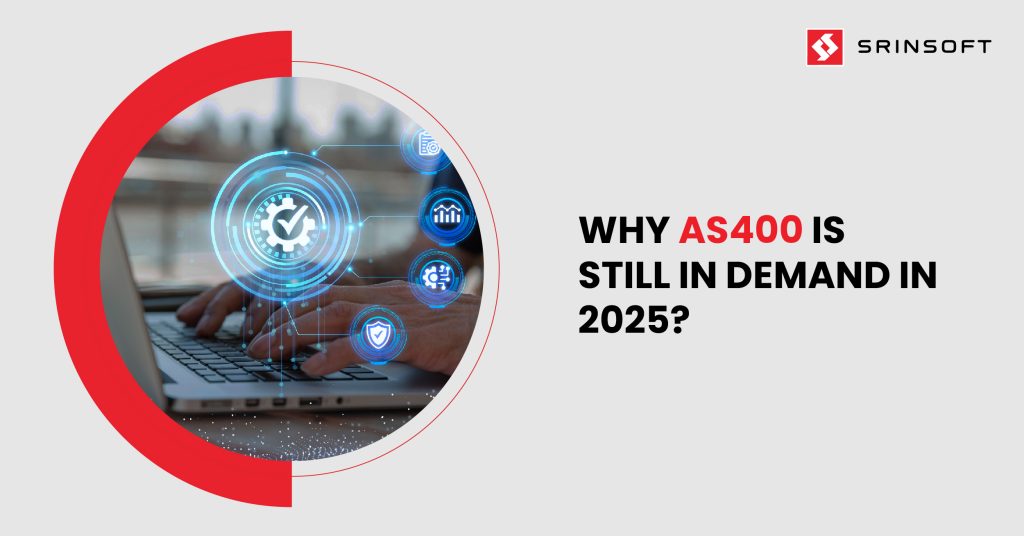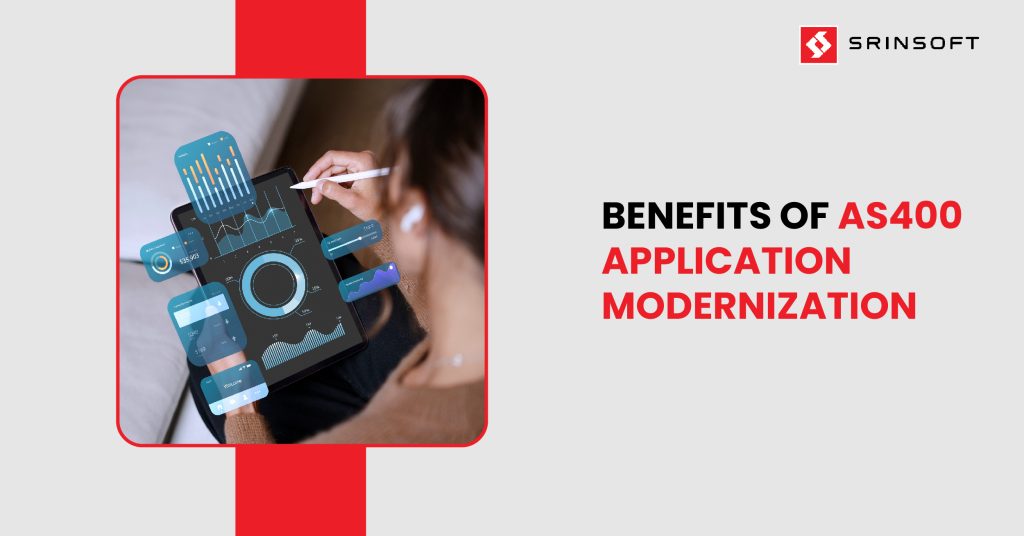
Introduction
As technology keeps evolving and new platforms emerge every year, some systems quietly endure and for good reason. One of those is the AS400, now called IBM Power Systems. Even though it’s been around for over 30 years, it’s still going strong and powering core operations for enterprises that can’t afford downtime, data breaches, or performance hiccups.
Newer platforms might grab more attention, but AS400 continues to deliver the fundamental requirements of enterprise computing namely stability, security, and performance. Looking at how it has evolved over time, it becomes very clear as to why AS400 remains a strong player in today’s tech-forward environment.
In this blog, we shed light on why this platform remains in demand, how it’s evolved over time, and why industries like finance, healthcare, and government still depend on it every day.
f you’re exploring next steps, our IBM i managed services can help you accelerate outcomes without disrupting current operations
Brief History of AS400 (IBM iSeries)
Introduced by IBM back in 1988, the AS400 was built as a midrange system aimed at small and mid-sized businesses. What made it stand out was its all-in-one design in which hardware, software, and the OS/400 operating system were all rolled into one platform. This tight integration made it easier for companies to run business-critical applications without managing multiple systems.
Over the years, the AS400 went through a few name changes iSeries, System i and eventually became what we now know as IBM i. But through all those rebrands, its core architecture and design approach stayed consistent. Its focus on reliability, security, and long-term performance helped cement its place as a trusted choice for enterprise workloads.
Built with robust engineering and thoughtful design, the AS400 has shown that good architecture doesn’t just age well it stays useful, even as the industry keeps transforming.
Overview of Its Evolution and Current Status as IBM Power Systems
After several iterations of rebranding, the AS400 has evolved into today’s IBM Power Systems, powered by the IBM i operating system. It has come a long way since its inception to become a modern platform that’s more powerful and scalable than ever.
The latest versions are built to handle modern demands like cloud integration, advanced analytics, and AI workloads. IBM hasn’t stopped investing in it either, making sure the system keeps up with the changing needs of enterprise IT.
On the hardware side IBM Power Systems is known for its processing capabilities and high availability. The IBM i operating system continues to deliver the kind of stability it’s always known for, and it now supports modern development tools and user-friendly interfaces.
More importantly, companies can now connect their legacy applications with modern APIs, containers, and hybrid cloud setups. That ability to blend the old with the new lets businesses innovate without giving up their trusted infrastructure. Simply put, IBM Power Systems strikes a smart balance between time-tested reliability and the flexibility today’s IT environments need.
Reasons Why AS400 is Still in Demand
a) Unmatched Reliability and Stability
One of the main reasons AS400 is still in demand in 2025 is because it’s incredibly reliable and stable. Companies have trusted it for years to run their most important operations as it keeps delivering high uptime with barely any hiccups.
That kind of consistency comes not just from good hardware, but from the integrated architecture that it is built on. Instead of stitching together different systems, AS400 brings the hardware, operating system, database, and security into one seamless setup. That all-in-one approach cuts down on compatibility issues and keeps things running smoothly.
AS400’s ability to keep operations running smoothly, even under pressure, has made it a go-to choice for over 30 years.
b) Robust Security Features
Security is one of the key strengths in AS400 systems. Its object-based architecture lets you set access rules at a very granular level, so every item (like file, program, or database) comes with its own security controls. This kind of precise way to control access helps ensure sensitive data stays protected and is only accessible to the right people.
On top of that, IBM i also comes with an array of features like security tools, including auditing, encryption, and user authentication, that is very useful for organizations to stay updated with evolving cybersecurity standards.
Since AS400 systems do not operate in the same way as traditional file-based systems do, they are less susceptible to the usual threats such as viruses and malware.
In a time when data breaches are both common and costly, the built-in security in AS400 gives the much-needed reliability especially when dealing with critical and sensitive workloads.
c) Longevity and Cost-Effectiveness
Another major reason companies stick with AS400 is its long lifespan and overall cost-effectiveness. Many organizations have been running it for decades with barely any need to upgrade the hardware, thanks to IBM’s solid engineering and the system’s ability to grow through software updates and modular add-ons
The system’s ability to grow through software updates and add-ons means it keeps up without needing full replacements. That kind of longevity saves companies a lot, especially since it doesn’t require frequent, complex migrations.
Also, the money invested in AS400 years ago continues to pay off, since newer IBM i versions keep adding modern features. For businesses looking to get the most out of their tech budgets, AS400 continues to stand out as a reliable, low-maintenance, and budget-friendly option.
Everything You Need To Know About AS/400 iSeries (IBMi)
d) Backward Compatibility
Backward compatibility is yet another reason why AS400 is still a favorite with businesses in 2025. Apps that were built years, even decades ago still run without a hitch on today’s IBM Power Systems, and they don’t need major rewrites to do it. That means companies save a lot of time, money, and risk when compared to switching platforms.
Companies that have a highly customized software stack benefit from being able to evolve their systems step-by-step without having to take risks on a full-blown, costly overhaul.
This flexibility also makes it easier to build hybrid environments, where legacy systems work side-by-side with newer apps through APIs and middleware.
What you get is a future-ready infrastructure that supports both innovation and stability which is an ideal scenario for companies modernizing without losing their original infrastructure.
e) Scalability and Performance
Scalability has always been the core strength of AS400. Even in its latest form as IBM Power Systems, it still delivers when businesses need to scale up. Businesses can easily scale up to handle more users, bigger workloads, and new applications without any hiccups.
The platform is built to deliver high performance for enterprise-level tasks, staying fast and efficient even when the loads get heavy.
IBM has kept the platform evolving with faster processors, smarter memory management, and support for containerization. All of this is helping AS400 stay relevant in today’s tech landscape.
For businesses that need a platform that can grow alongside them, AS400 offers that flexibility without compromising on speed or reliability.
f) Industry-Specific Applications
AS400 continues to be popular because it is so deeply embedded in industries like finance, insurance, transportation, manufacturing and healthcare among many others. These sectors count on systems that are tried and tested to handle mission-critical tasks like managing patient records, processing financial transactions, and keeping track of public records.
AS400’s track record for reliability and performance makes it a natural choice when there’s no room for error. Take a big regional bank, for instance — they might use IBM i to run core banking systems with the expectation that it never goes offline. Or picture a government office that trusts AS400 to safely store and retrieve decades’ worth of records
These real-world uses are a testament to the system’s flexibility and how it supports important services that demand uptime and top-notch security.
g) Community and Support
The AS400 gets a big boost from its strong, active user community, which plays an important role in its longevity. Whether it’s forums, user groups, pro networks (like IBM Common Power up and Navigate), or IBM-led events, there’s no shortage of places for IT teams to turn to when working with IBM i systems.
The Premier Conference for IBM i Professionals: Book Your Seats!
This solid community helps make sure people can share knowledge, solve problems, and exchange best practices with ease. On top of that, there’s still a pool of experienced professionals out there with decades of hands-on time with the platform. Companies can find and retain the talent they need to keep things running smoothly.
IBM also keeps the platform fresh with regular updates and solid support, helping it stay secure and up to speed with today’s tech standards.
Conclusion
What keeps the AS400 going strong in 2025 is its ability to deliver on the things that matter— high uptime, tight security, and cost savings. Its backward compatibility and reliability in running critical workloads make it a smart pick for industries that can’t afford downtime.
As IBM Power Systems and IBM i evolve, businesses get the best of both worlds: trusted infrastructure with a path to modernization. Backed by IBM’s ongoing support and a strong user community, AS400 remains a strategic pillar in enterprise IT helping organizations move forward without leaving their core systems behind.



